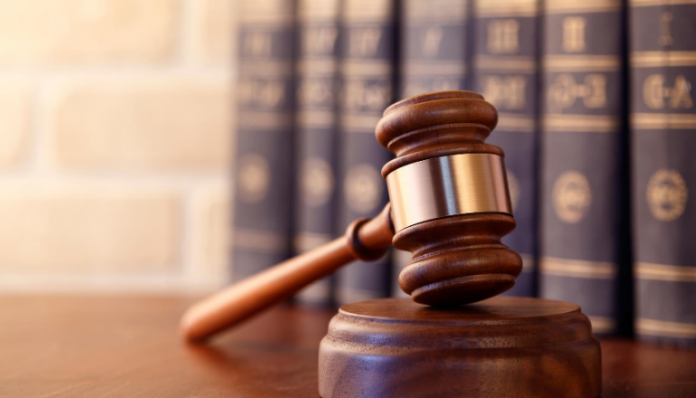This article is written by Sunkara Vishnu Ameya, pursuing Certificate Course in National Company Law Tribunal Litigation from LawSikho. The article has been edited by Prashant Bhaviskar (Associate, LawSikho) and Smriti Katiyar (Associate, LawSikho).
Table of Contents
Introduction
Historically, the Courts formed the go-to centre for seeking a remedy. However, with special laws and pending matters burdening courts, a need was felt to establish Adjudicating Authorities which are governed by the respective statutes and owe their existence to the respective statutes. Some of the Adjudicating Authorities in India are the Income Tax Tribunal, Income Tax Appellate Tribunal, The National Company Law Tribunal (NCLT), The National Company Law Appellate Tribunal (NCLAT). The present article would delve into the difference between Courts and Adjudicating Authorities. The Adjudicating Authorities covered under this article is limited to the National Company Law Tribunal (NCLT) and the National Company Law Appellate Tribunal (NCLAT).
The court structure in India
The Court Structure in India, as envisaged by the Constitution of India is a 3-tier system with the Hon’ble Supreme Court of India at the top. Further, the Constitution of India deals with the constitution and powers of the Supreme Court of India, under Chapter V deals with High Courts for States and under Chapter VI deals with Subordinate Courts. It is pertinent to note that the Hon’ble Supreme Court of India and the High Courts derive their existence and powers from the Constitution of India and are not bound by any Statute enacted by Parliament. For instance, Statutory provisions like Section 482 of The Criminal Procedure Code, 1973 or even Section 151 of The Code of Civil Procedure, 1908 (CPC) acknowledge the inherent powers conferred upon them by the Constitution. The Constitution of India further empowers the Supreme Court of India and the High Courts to answer questions of law and even interpret the Constitution.
Unlike the Supreme Court of India and the High Courts, the Subordinate Courts are bound by the procedure laid down in Statutes and are bound by the decisions of the Supreme Court and the respective High Court subject to. The Subordinate Courts are courts that adjudicate upon questions of fact, ascertain the fact and then apply the law propounded in the Statute or law propounded by the Supreme Court and the respective High Court subject to. In order to ascertain facts and adjudicate matters, the Subordinate Courts are empowered to look into both physical evidence and oral evidence. Further even the parties to the dispute may put forth evidence to buttress their claims and the Subordinate Court is duty-bound to scrutinize such evidence. Subordinate Courts primarily deal with matters covered under the Civil Procedure Code, 1908 (CPC) and the Criminal Procedure Code, 1973 (Crpc). This empowers the Subordinate Courts with competent jurisdiction to even impose imprisonment and adjudicate matters which are of criminal nature.
NCLTs and the NCLAT
As previously stated, the present article would only cover two types of Adjudicating Authorities, viz. the NCLT (NCLT) and the NCLAT (NCLAT). Under the erstwhile regime, the Civil Courts and the High Court were empowered to deal with matters relating to Liquidation and Dissolution of Companies and other matters specified. However, in order to expedite adjudication for matters relating to Companies and taking note of the specialized nature of law and facts involved, Company Law Boards (CLB) were notified in the year 1991, which were empowered to deal with matters relating to insolvency and companies.
Further, in the year 1999, a report of a High-Level Committee headed by Justice Eradi observed that there was a number and duplicity of matters and court proceedings as the most significant reason for the massive delay in the dissolution of companies. Committee further recommended the constitution of a national tribunal which should combine the powers of various forums, such as high courts in restructuring and winding-up, the Company Law Board (“CLB”), Board for and Appellate Authority for Industrial & Financial Reconstruction under the Sick Industrial Companies (Special Provisions) Act.
As a sequitur to the said recommendations of the Committee, the Companies (Amendment) Act, 2002 was enacted which provided for the establishment of an NCLT. The said Amendment met various challenges which stalled the process. Eventually, Section 408 was inserted in the new Companies Act, 2013 which provided for the establishments of an NCLT, various benches of the NCLT and The NCLAT. This move was further fructified with the Ministry of Corporate Affairs (MCA) Notification dated. June 1, 2016, which called for the establishment of 11 Benches of the NCLT. This move dissolved the Company Law Boards (CLBs). As of today, there are 15 Benches of the NCLT and 2 Benches of the NCLAT.
Historical background of tribunals
Black’s Law Dictionary in its 4th edition defines ‘Tribunal’ as: ‘The seat of a judge; the place where he administers justice. The whole body of judges who compose a jurisdiction; a judicial court; the jurisdiction which the judges exercise’.
The Constitution of India under Part XIV-A which consists of two Articles 323A and 323B deals with the constitution of Tribunals. Further, the Constitution of India under Article 323B authorizes Parliament and State Legislatures to set up Tribunals for the following matters:
a. Levy, assessment, collection and enforcement of any tax;
b. Foreign exchange, import and export across customs frontiers;
c. Industrial and labour disputes;
d. Matters connected with land reforms covered under Article 31-A;
e. Ceiling on Urban property;
f. Elections to either House of Parliament or Legislatures of the States and;
g. Production, procurement, supply and distribution of food or other essential goods.
In the case of Durga Shankar Mehta v/s Raghuraj Singh (1955 SCR 287) the Hon’ble Supreme Court defined a ‘Tribunal’ in the following words:
“The expression Tribunal as used in Article 136 does not mean the same thing as ‘Court’ but includes, within its ambit, all adjudicating bodies, provided they are constituted by the state and are vested with judicial functions as distinguished from administrative or executive functions.”
In the case of State of Gujarat v/s Gujarat Revenue Tribunal Bar Association ( (2012) 10 SCC 353), the Hon’ble Supreme Court observed that a particular Act/set of Rules will determine whether the functions of a particular Tribunal are akin to those of the courts, which provide for the basic administration of justice.
Structure of the adjudicating authorities
Akin to the Court system, the Adjudicating Authorities, viz. The NCLT as well as the NCLAT is a 3 tier system, with the NCLT being the first for filing an Application. In other words, it is the NCLT which is established under Section 408 of the Companies Act, 2013; which has ‘Original Jurisdiction’ and Applications are directly filed before the NCLT. The NCLAT on the other hand is established under Section 410 of the Companies Act, 2013 as an Appellate Authority and by default, the NCLAT is not the first forum to seek remedy. Further, if a party is aggrieved with the decision of the NCLT, the party may prefer an Appeal to the NCLAT on a “Question of Law”. If a party is further aggrieved by the decision of the NCLAT, the party may approach the Hon’ble Supreme Court on a substantial question of law.
Jurisdiction of courts
As previously stated, the 3-tier Judicial system in India comprises the Supreme Court, the High Courts and Subordinate Courts. As these courts derive their authority from the Constitution of India, the scope of jurisdiction of these courts is vast. Under Article 136 of the Constitution, the Supreme Court has jurisdiction over all Courts and Tribunals in India. Further, both the Supreme Court as well as the High Courts have jurisdiction over several other matters like Writ Petitions, Public Interest Litigations and even overseeing the functioning of Subordinate Courts.
Further, in matters relating to Securities and Insolvency, the role of Subordinate Courts has been extinguished. The Hon’ble Supreme Court in the case of Shashi Prakash Khemka vs. NEPC Micon & Others (2019 SCC OnLine SC 223) ruled that under Section 430 of the Companies Act, 2013; it is the NCLT which will have jurisdiction and Civil Courts are barred from hearing such matters. Section 9 of the Code of Civil Procedure, 1908 (“CPC”) has the jurisdiction to try all suits of a civil nature accepting suits of which cognizance is either expressly or impliedly barred. Accordingly, though, the proper forum to adjudicate on an issue is the Civil Court, Section 9 of the CPC excludes suits of civil nature which are being empowered by the Special Act on the Tribunal.
Jurisdiction of adjudicating authorities
Both the Adjudicating Authorities, the NCLT as well as the NCLAT are Quasi-Judicial Authorities. The Hon’ble Supreme Court in the case of State of Gujarat v/s Gujarat Revenue Tribunal Bar Association (2012) 10 SCC 353 concerning ‘Quasi-Judicial authority’ observed that: “Where there is a lis between two contesting parties and a statutory authority is required to decide such dispute between them, such an authority may be called as a quasi-judicial authority.”
Further, both the NCLT as well as the NCLAT are not bound by the procedure emanated under the Civil Procedure Code, 1908, but are bound by Principles of Natural Justice and the Companies Act, 2013, the IBC and the NCLT and NCLAT Rules.
Further, as both the NCLT and the NCLAT derive their power from Section 408 and Section 410 respectively of the Companies Act, 2013; they are bound by the Statutes like IBC and The Companies Act, 2013 and cannot traverse beyond the scope of the said statutes. Further Hon’ble Supreme Court in the case of Essar Steel vs. Satish Kumar Gupta (CIVIL APPEAL NO. 8766-67 OF 2019) ruled that the NCLT and the NCLAT are not courts of Equity and are strictly bound and limited to the jurisdiction conferred upon it by the IBC and the Companies Act, 2013. Further, the Hon’ble Supreme Court of India in the case of Gujarat Urja Nigam vs. Amit Gupta ruled both the NCLT and the NCLAT owe their existence to the IBC and the Companies Act and are limited to the powers conferred by these acts and cannot usurp jurisdiction which is not conferred by either of the statutes.
The NCLT plays a key role in the Insolvency and Bankruptcy Code, 2016 (IBC) as it is the NCLT that is authorized to order initiation of the Corporate Insolvency Resolution Process (CIRP). In doing so, the role of the NCLT is only to ascertain default from Information Utility or to look into any other evidence submitted as a record of default. Further, the jurisdiction of the NCLT is a ‘Summary Jurisdiction’. Under Summary Jurisdiction, the role of the NCLT is not to adjudicate pre-existing disputes or even go into the depths of the dispute. The Hon’ble Supreme Court in the case of Mobilox Innovations Private Limited vs. Kirusa Software Private Limited (CIVIL APPEAL NO. 9405 OF 2017), ruled that the role of the NCLT is not to adjudicate pre-existing disputes, but is only to ascertain the default. Further, in the case of Shesh Nath Singh & Ors. vs. Baidyabati Sheoraphuli Co-operative Bank Ltd and Anr. (CIVIL APPEAL NO. 9198 OF 2019), the Hon’ble Supreme Court ruled that The Adjudicating Authority does not resolve disputes, in the manner of suits, arbitrations and similar proceedings and the ultimate object of the Adjudicating Authority is only to ascertain default and Amr initiate CIRP.
The NCLT as well as the NCLAT being a creature of the Companies Act, 2013 as well as the IBC is not bound by the Civil Procedure Code, 1908 or the Indian Evidence Act, 1872. As a consequence, Civil Courts are barred from hearing any matter in which the NCLT has exclusive jurisdiction. However, this does not extinguish the jurisdiction of High Courts. In the case of L. Chandrakumar v. Union of India (A.I.R. 1997 SC 1125), a question was raised as to whether the setting up of the Tribunals and excluding the jurisdiction of the High Court was constitutional? A ruling was made by the seven-judge bench of the Supreme Court that the power of ‘judicial analysis’ of the High Court under Article 226 of the Constitution cannot be eliminated by the Parliament.
Limitation on the role of adjudicating authority
While the Hon’ble National Company Law Tribunals all over India have been time and again directing the Central Government to order an investigation into the affairs of the Corporate Debtor as and when it deems that the same ought to be done, this mechanism however may hit turbulence after the recent ruling of NCLAT [Vijay Pal Garg & Ors. vs. Pooja Bahry (Liquidator in the matter of Gee Ispat Private Limited in Company Appeal (AT) Insolvency No. 949 of 2019], wherein it was held that the Adjudicating Authorities cannot possess the power to direct the Central Government to conduct/order the investigation against any company.
Conclusion
Both the Adjudicating Authorities as well as the Courts in India function with the ultimate objective of the dispensation of Justice in compliance with the law. However, the role of Adjudicating Authorities is limited to that conferred upon it by the Statute and the rules framed by the concerned ministry. On the other hand, Courts derive their authority from the Constitution, thus having a greater scope. Ultimately, both the Courts and the Adjudicating Authorities together act inextricably thereby paving way for dispensation of Justice.
References
2. https://www.icsi.edu/media/portals/22/Team%206.pdf
Students of Lawsikho courses regularly produce writing assignments and work on practical exercises as a part of their coursework and develop themselves in real-life practical skills.
LawSikho has created a telegram group for exchanging legal knowledge, referrals, and various opportunities. You can click on this link and join:
https://t.me/joinchat/J_0YrBa4IBSHdpuTfQO_sA
Follow us on Instagram and subscribe to our YouTube channel for more amazing legal content.
 Serato DJ Crack 2025Serato DJ PRO Crack
Serato DJ Crack 2025Serato DJ PRO Crack











 Allow notifications
Allow notifications



